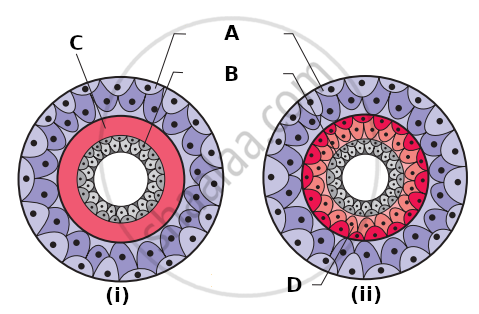Advertisements
Advertisements
प्रश्न
The symmetry exhibited in cnidarians is ______.
पर्याय
Radial
Bilateral
Pentamerous radial
Asymmetrical
उत्तर
The symmetry exhibited in cnidarians is Radial.
संबंधित प्रश्न
How useful is the study of the nature of body cavity and coelom in the classification of animals?
What are the reasons that you can think of for the arthropods to constitute the largest group of the animal kingdom?
Write in brief about progressive changes in animal classification.
Label the body organization of human in the following figure:

Draw a neat and labelled diagram.
Jellyfish
The following characteristics are essential for classification.
The largest division of the living world is ______.
Which of the following have the highest number of species in nature?
Which of the following is a crustacean?
Lateral line sense organs occur in ______.
Observe the animal below and answer the following questions.

- Identify the animal.
- What type of symmetry does this animal exhibit?
- Is this animal Cephalized?
- How many germ layers does this animal have?
- How many openings does this animal’s digestive system have?
- Does this animal have neurons?
Choose the term that does not belong in the following group and explain why it does not belong?
Notochord, cephalisation, dorsal nerve cord and radial symmetry.
What are flame cells?
Which organism is called Friends of farmers? Why?
Examine the figures of diploblastic (i) and triploblastic (ii) organization in animals given below and identify the labelled parts A to D.

Sort out the animals on the basis of their symmetry (radial or bilateral) coelenterates, ctenophores, annelids, arthropods, and echinoderms.
Complete the paragraph using proper words:
(Asymmetrical, Paramecium, Equal, imaginary, central, insects, rats, bird, three, unequal)
If body of any animal is cut through ______ axis of body, it may or may not produce two equal halves. Depending upon this property, there are different types of animal bodies. In the case of ______ body, there is no any such imaginary axis of the body through which we can get two equal halves. For example Amoeba, ______ some sponges. In radial symmetry type of body, if imaginary cut passes through central axis but any plane of body, it gives two ______ halves. For example Starfish. In case of this animal, there are five different planes passing through ______ axis of body through which we can get two equal halves. In Bilateral symmetry type of body, there is only one such imaginary axis of body through which we can get two equal halves. For example: ______ fishes, frog, birds, human, etc.
Animal with bilateral symmetry in ______.
